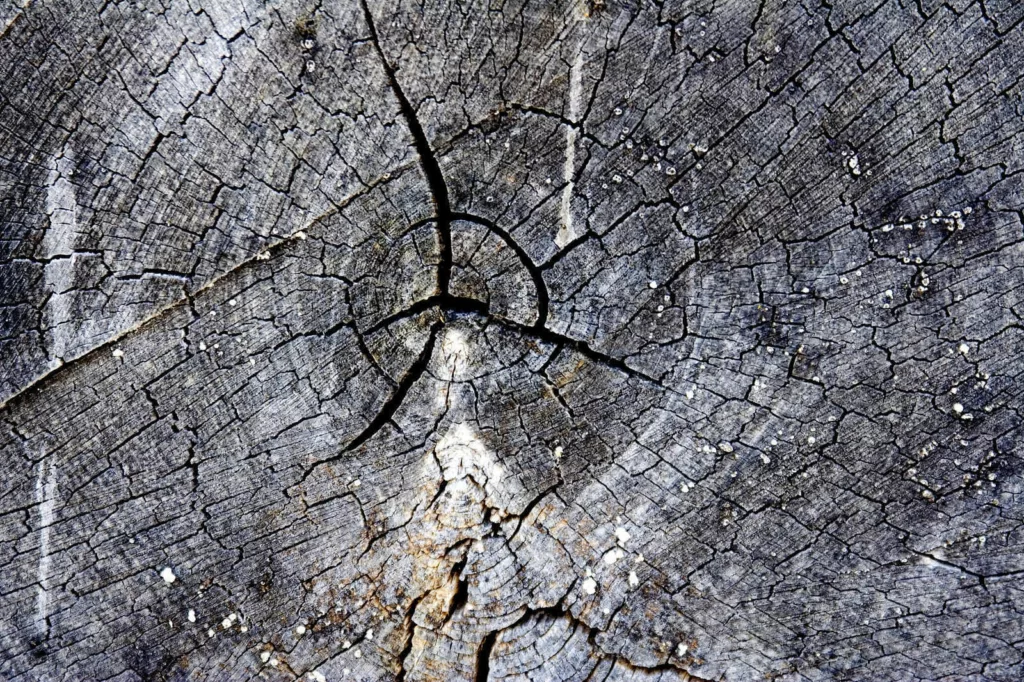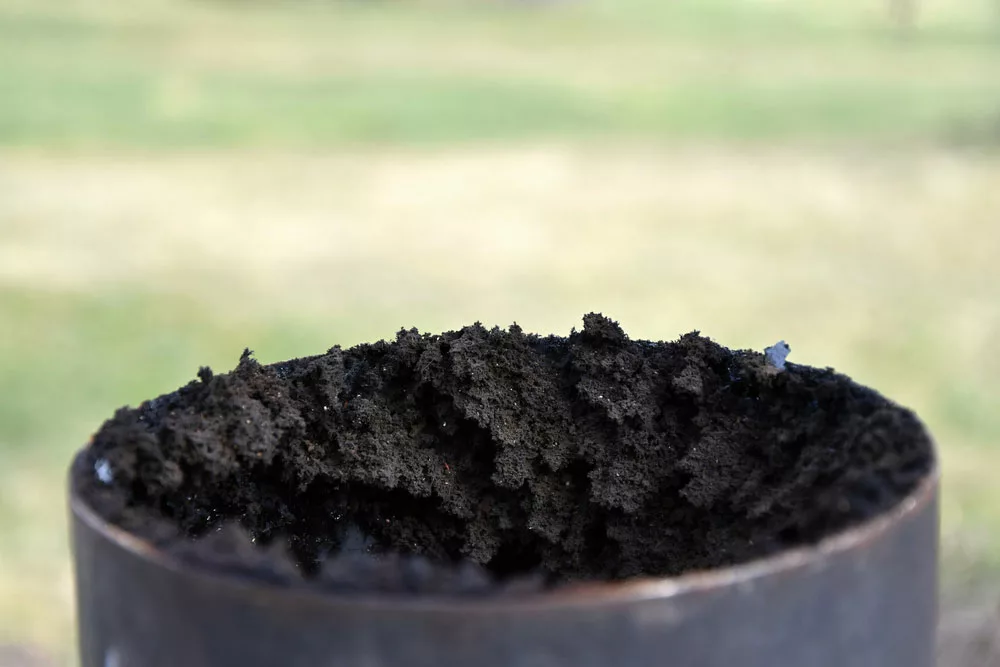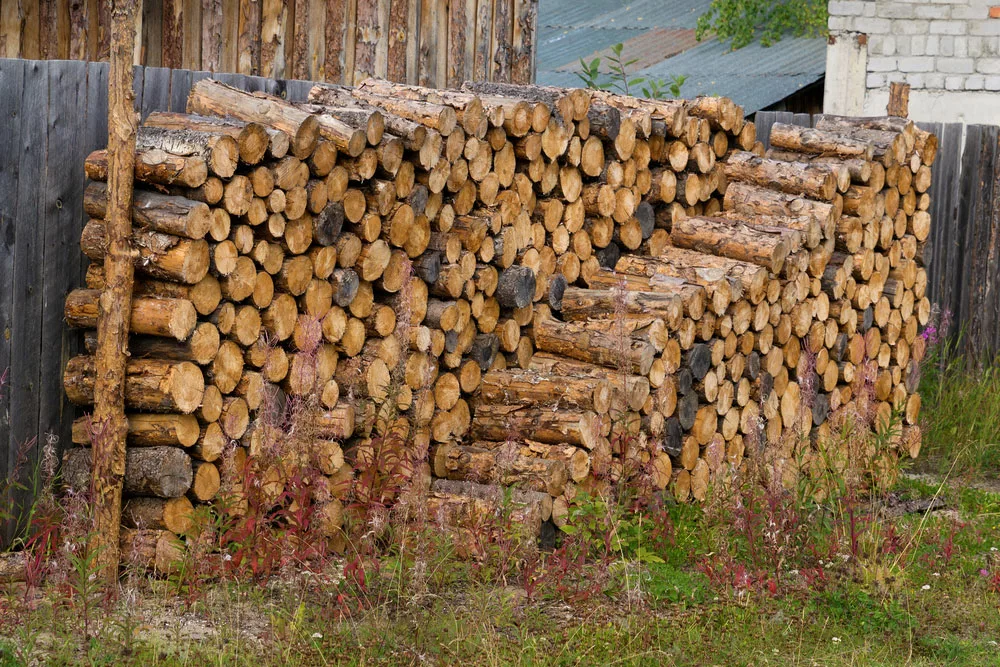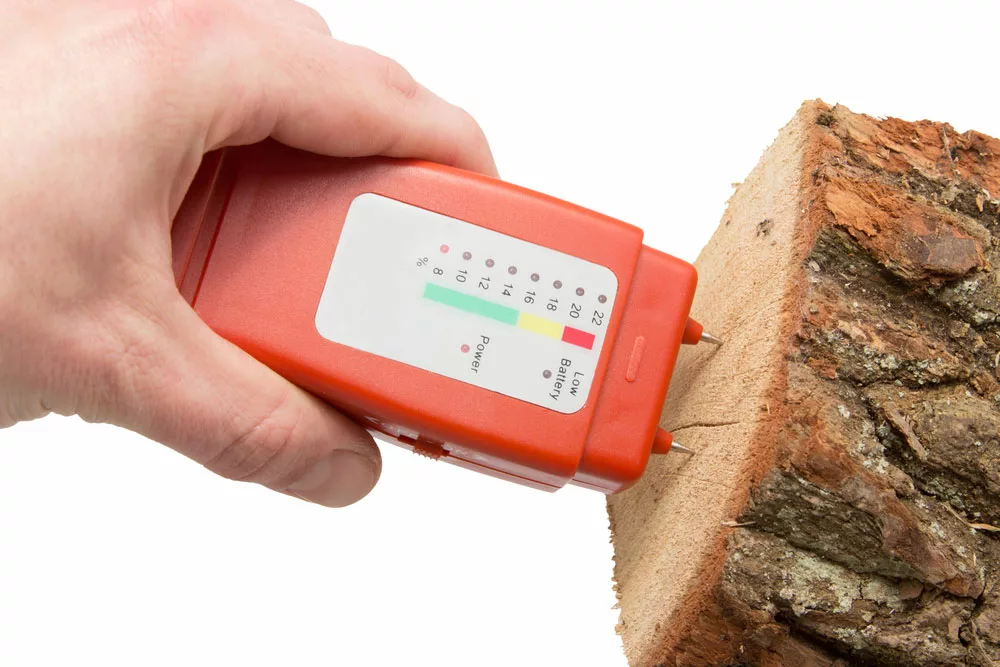What Does Seasoned Firewood Look Like? Trees, by nature, contain high water content, which they get from their root. Freshly cut wood is, therefore, only suitable for burning once it is seasoned right.
Poorly seasoned woods will produce a lot of smoke when burnt, which can harm your health.
Poorly seasoned woods are also more stressful to burn and would usually not produce the heat you require.
So, how do you know wood that is well-seasoned and suitable for use? What does seasoned firewood look like?
You can identify well-seasoned wood by observing its properties, i.e., color, weight, the sound it produces, etc., or by simply using a moisture meter.
The information provided here will help you know what seasoned wood is and how to identify one quickly.
What is Seasoned Firewood?

Cracks on Wood
Seasoned firewood is one whose moisture content is less than 20%. To season wood, stack it up, expose it to the sun and wind, and allow it to dry for some time. Hardwood usually takes longer to dry than softwood, but the least appropriate duration for seasoning wood is six months.
You can know whether your firewood is seasoned or not by using a moisture meter or by observing the following features below:
Color
Green wood is unseasoned; its moisture content is usually above 60%, so it is terrible for burning. Look out for wood that is darker and brownish.
Weight
Seasoned wood is usually lighter to carry than green wood of the same size. The moisture content in unseasoned firewood makes it heavier.
Burning
If you find it difficult to light up your wood, then it is an unseasoned wood. This kind of wood takes a lot of time to burn due to resistance from the water contained in it. When it does light up, it generates less heat than needed and releases a lot of smoke and creosote. Unseasoned wood also leaves residual ash that requires much cleaning.
What Does Seasoned Firewood Look Like: Sound
Seasoned wood produces a clunk sound when hit with another. Unseasoned green wood has a less noisy thump sound. Unseasoned wood will also give off a hissing sound during burning.
Cracks
You may find cracks at the ends of seasoned wood. These cracks only happen sometimes, though.
What Does Seasoned Firewood Look Like: Moisture meter
A moisture meter is the most reliable way to determine if your wood is well-seasoned. When water levels are high (above 20%), the meter displays a red color; for moisture levels between 15% to 20%, it is amber and green for levels below 15%. You can purchase a good moisture meter from stores or the internet.
Why Firewood Needs to be Seasoned

Creosote formation after burning
When you know why something is good, you understand better why you need it. Seasoned firewood has many benefits compared to poorly seasoned ones. You will understand why seasoned wood is excellent and poorly seasoned wood is not suitable for burning.
Benefits of using Seasoned Wood
- It burns faster. It is easier to light seasoned wood.
- It is environmentally friendly. It releases less smoke and creosote, which are harmful to you.
- It is sweet smelling. Seasoned hardwood like apple, cherry, and ash produces beautiful scents when burned, adding more pleasantness to your home.
- It generates more heat. The BTU level of seasoned wood is usually high; hence it burns better and gives off a lot of heat.
Dangers of Burning Unseasoned Wood
- Environmentally hazardous. Burning unseasoned wood produces too much smoke and creosote. Creosote formation in the atmosphere is harmful to your health as it causes issues in your respiratory tract and skin irritation.
- It generates less heat. BTU levels are low because of the much water in the wood.
- It burns slower. It burns much slower since it takes much time to consume the water in the wood.
- Ash residue. It produces residual ash requiring much cleaning.
How Long it Takes to Season Firewood

Stack of Firewood
The time it takes for wood to be well-seasoned depends on several factors: wood species, wood stacking, and environmental conditions. We will consider them more deeply.
Wood Species: Hardwood vs. Softwood
More time is required to dry hardwood compared to softwood. It is because hardwood is denser. Softwood typically seasons between 6-8 months, whereas hardwood requires a year or more to get well-seasoned.
Wood Stacking
Wood that is split or chopped into smaller parts will dry faster. Splitting a wood or reducing its size exposes its surface area to more sunlight and breeze, allowing it to dry faster than larger wood.
Environmental Conditions
Areas with less sunshine, wind, and low temperature increase the time it takes for your wood to be well-seasoned.
How To Know If My Firewood Is Seasoned Properly

Wood Moisture Meter
Your best bet to figuring out if your wood is well-seasoned is by using a moisture meter. Look out for meter readings below 20%. You also know by looking at color, sound, weight, sound, and how it burns, as explained earlier in this article. Some more features to look out for include;
- Tree bark should be easy to remove from a well-seasoned wood.
- The branches from a seasoned wood snap rather than bend.
- It should smell fresh. A strong irritating smell indicates that there is still a lot of moisture content.
- Well-seasoned firewood should be bug-free.
Conclusion
With the information provided here, you can now tell what seasoned wood looks like. Whether buying firewood from retailers or seasoning the wood yourself, make sure it is dry, darker in color, easy to lift, and smells fresh. These are sure signs that the wood is well-seasoned and suitable for burning.
